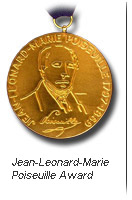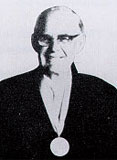|
||||
|
||||
|
In 1966, the 1st international Conference on Hemorheology, held at Reykjavik, Iceland, the Poiseuille Gold Medal was awarded to its first recepient, Robin Fåhræus. He was highly esteemed as an innovator in experimental hemorheology. He had been a pioneer long before biorheology with its different fields became an identified science. Fåhræus's scientific work was characterized by a remarkable capacity for making fundamental observations, using simple equipment handled with great skill. In model experiments using glass capillaries of very small diameter, he found that paradoxically, the relative viscosity of the blood, and thus the resistance to flow, decreased when the diameter of the vessel was reduced from 0.3 mm to capillary size. This effect of the vessel diameter is known as the Fåhræus-Lindqvist Phenomenon. He correlated humoral pathology with the increased erythrocyte sedimentation rate and elucidated its clinical significance. Thus he had contributed the discovery of the sedimentation reaction which constitutes a milestone in the history of clinical symptomatology. Fåhræus demonstrated its utility as a nonspecific indication of a diseased body. He initiated and introduced the erythrocyte sedimentation rate as a clinical tool. The procedure has been modified in many ways, but the applicability of the basic principle has been demonstrated in thousands of papers all over the world. He, himself, was more intersted in the theoritical explanation of the sedimentation reaction. He showed that the suspension stability was influenced by plasma factors, he studied the hydrodynamics of the sedimentation and made a series of interesting observations of the flow properties of blood. He made many important contributions to hemorheology.
|
The International Society of Biorheology © Copyright 2004

